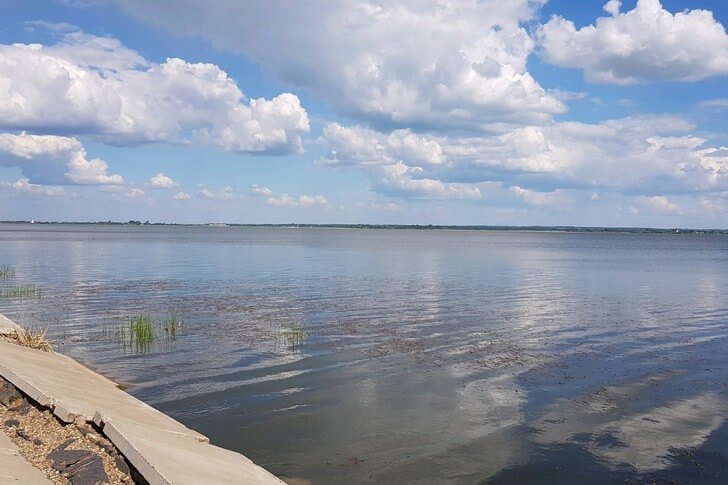The history of Rostov is inextricably linked with the formation of the Russian state. Getting here, it’s like being transported by a time machine several centuries ago and find yourself in a medieval settlement, where on every corner there is a majestic temple, and the number of monasteries exceeds all reasonable limits. It may seem that there are too many churches for a population of 30 thousand people, but it should be remembered that each of them is not just a religious institution, but an invaluable architectural monument.
In Rostov the Great, you can visit museums, visit a master class and learn an ancient craft, buy Russian souvenirs, go out of town to one of the surrounding villages and wander through the forests, or simply enjoy the views while sitting on the shore of Lake Nero.
What to see and where to go in Rostov?
The most interesting and beautiful places for walking. Photos and a short description.
- Rostov Kremlin
- Assumption Cathedral
- Belfry of the Rostov Kremlin
- Gate Church of John the Evangelist
- Church of the Resurrection
- Church of Hodegetria
- Church of the Savior on Senyah
- Red Chamber
- Metropolitan Garden
- Enamel Museum
- Museum The Frog Princess
- House of Crafts
- Museum of Rostov Merchants
- Art Gallery Khors
- Gymnasium named after A. L. Kekin
- Church of Isidore the Blessed on the ramparts
- Church of the Savior at the Market
- Church of St. John the Evangelist on Ishna
- Spaso-Yakovlevsky Monastery
- Avraamiev Epiphany Monastery
- Trinity-Sergius Varnitsky Monastery
- Mother of God-Nativity Monastery
- Rostov Boris and Gleb Monastery
- City Park
- Lake Nero
Rostov Kremlin
The Rostov Kremlin is not the usual defensive structure with towers, narrow loopholes and fortress walls, which can be seen in ancient Russian cities. So it is customary to call the residence of the metropolitan of the local diocese (metropolitan court). The complex was built in the 17th century, when Rostov was no longer of strategic importance, so its structures were not suitable for protection from the enemy: wide entrance gates, windows with architraves, lack of places for the convenient location of the defenders. The complex consists of 11 towers, churches, "chambers" and a number of civil buildings. Since 1998, the Kremlin has been a candidate for inclusion in the UNESCO World Heritage List.
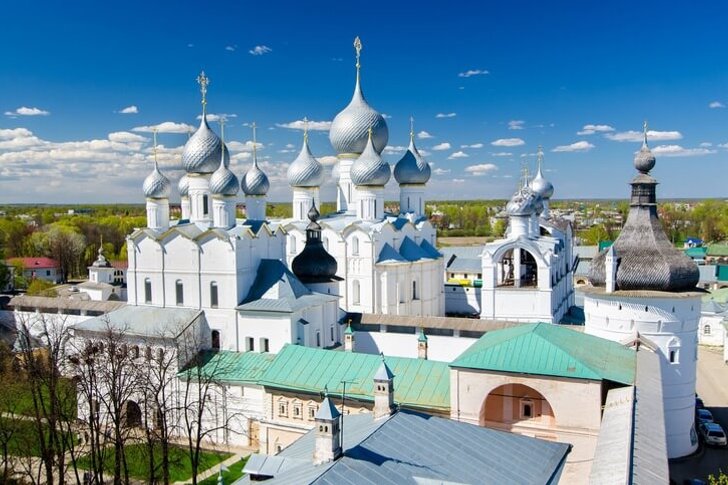
Assumption Cathedral
The temple forms a single architectural ensemble with the Kremlin, although it was built a century earlier. It is believed that as early as the 11th century there was a wooden church here, and the first stone building was erected under Prince Andrei Bogolyubsky in the 1220s. The building that has survived to this day was built in 1512, a separate belfry was added later. Inside, valuable frescoes of the 16th-17th centuries, discovered during the restoration, as well as the graves of the princes and metropolitans of the city, have been preserved.
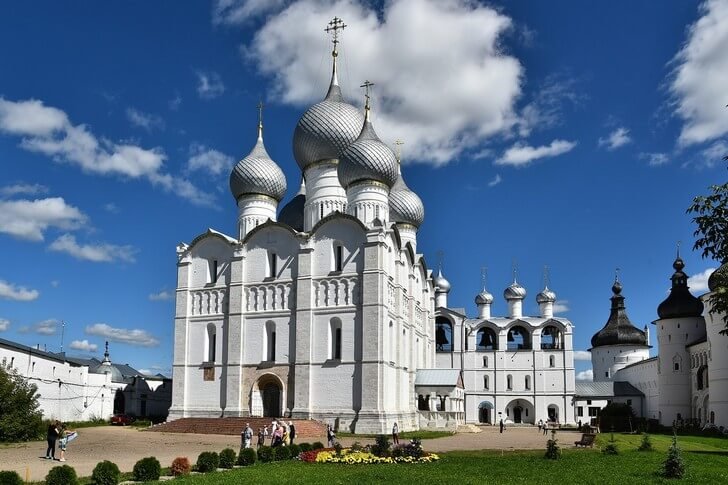
Belfry of the Rostov Kremlin
The belfry, located next to the Assumption Cathedral, is not a typical bell tower that every church has - it is an independent architectural complex with an interesting design of four compartments (one large and three smaller), equipped with bells of different sizes. The building was built in the second half of the 17th century. The system of bells works as a full-fledged musical instrument, emitting various melodies known as Rostov chimes.
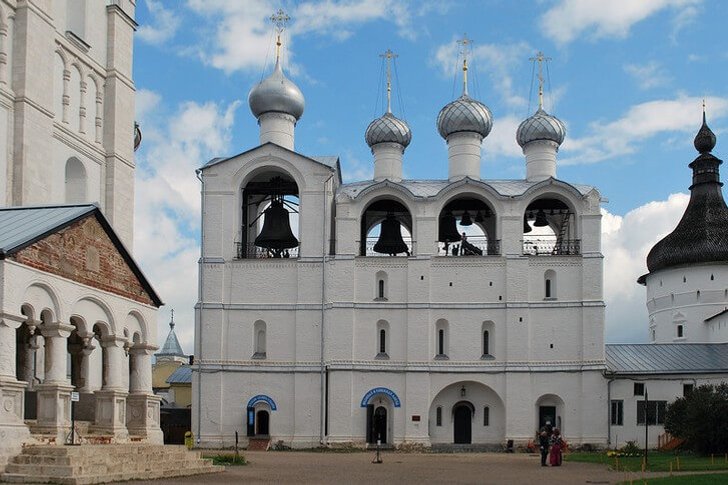
Gate Church of John the Evangelist
The church is located at the western entrance to the Rostov Kremlin. Perhaps it is one of the most grandiose monuments of the time of Metropolitan Jonah, the closest associate of Patriarch Nikon, where all the best architectural solutions of that time were embodied. The facade of the temple is connected with powerful perverse rounded towers and entrance arches of the gate, above which domes rise.
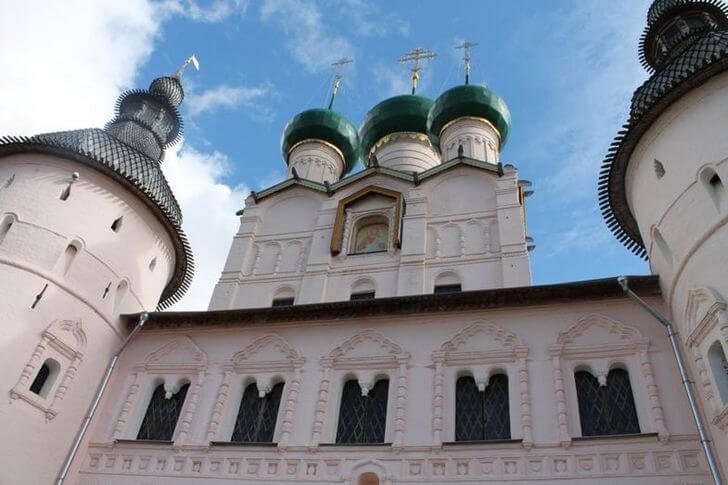
Church of the Resurrection
The temple is located above the Holy Gates - the main entrance to the metropolitan courtyard. It was built in the 17th century. The features of the architecture of the building are the simple and almost devoid of decorations, the severe appearance of the upper part and the lower part, richly decorated with tiles, stucco and patterns. A solemn atmosphere reigns inside, the space is decorated with columns, a five-tiered iconostasis and skillful painting illustrating the earthly life of Christ.
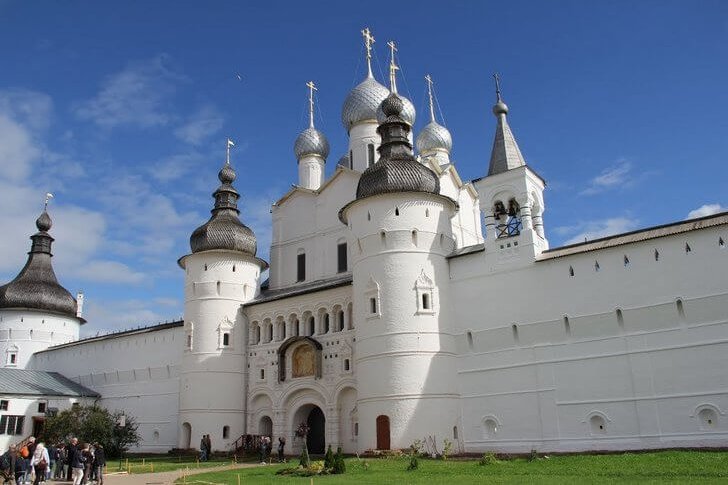
Church of Hodegetria
The original building in the style of the Moscow baroque, which differs significantly in its appearance from the rest of the temples of the Rostov Kremlin. The base has the shape of a rectangle, on which the quadrangle is fixed. The temple has only one dome, ending with a figured cross. The facade is decorated in the technique of diamond rust (diamond-shaped volumetric cladding). The interior also differs from the traditional one due to the presence of molded oval cartouche frames.

Church of the Savior on Senyah
The home church of the metropolitans, where they not only prayed, but also lived. The building is a rectangular structure with a square quadrangle and one dome. On the ground floor there is a porch and an entrance. It should be emphasized that the temple was built without any architectural frills - smooth walls, simple-shaped windows and an unpretentious roof. In a word, nothing superfluous, but one continuous practicality.
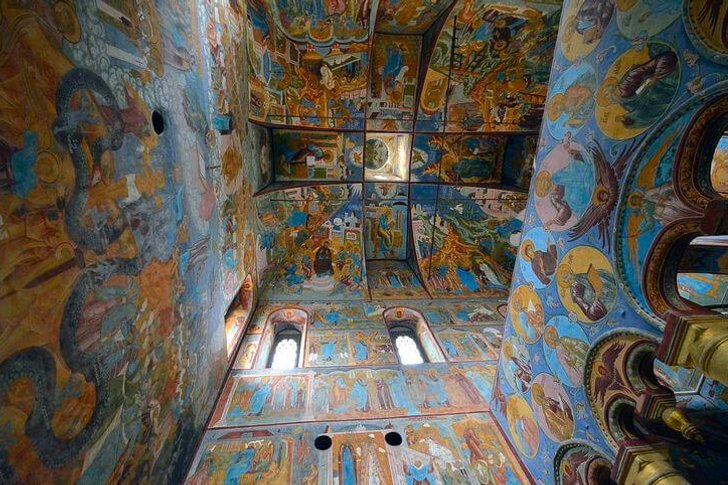
Red Chamber
Civil building of the 17th century, where residential chambers and a refectory were located. The elegant two-hipped porch with pointed roofs, leading to the second floor, immediately attracts attention. The facade of the building does not have any decorations, however, carved window openings stand out against its even background. The interiors are frescoed and tiled from floor to ceiling.
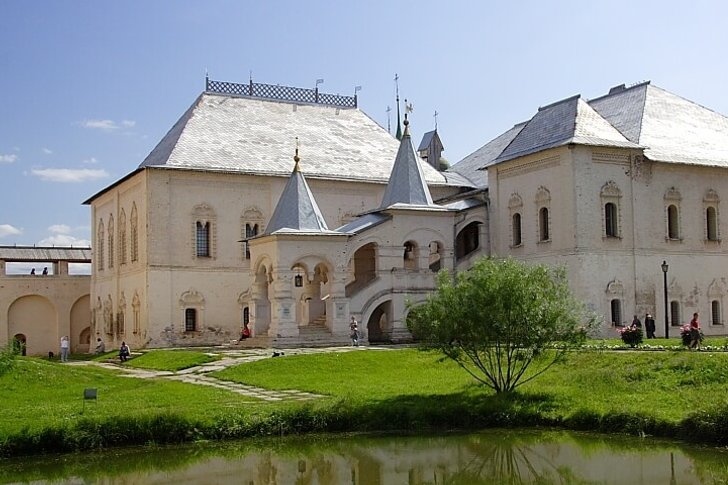
Metropolitan Garden
The garden was conceived by Metropolitan Jonah as a symbol of paradise, but in reality it turned out to be much more modest. Moreover, it had a purely practical function and was used as a garden that supplied fresh vegetables to the table of church hierarchs. And now various agricultural crops and medicinal plants grow on the territory of the garden (most of them are occupied by apple trees). During the season, volunteers are involved in the harvest.

Enamel Museum
Finift is the ancient Russian name for enamel, which the craftsmen used to decorate various products, borrowing the technique from Byzantine craftsmen. Museums with works of the 18th–20th centuries are located on the territory of the Kremlin and at the Rostov Finift factory. In addition to the tour, which includes a tour of the exposition and a story about the history of the craft, visitors are invited to take part in a master class and learn how to enamel themselves.
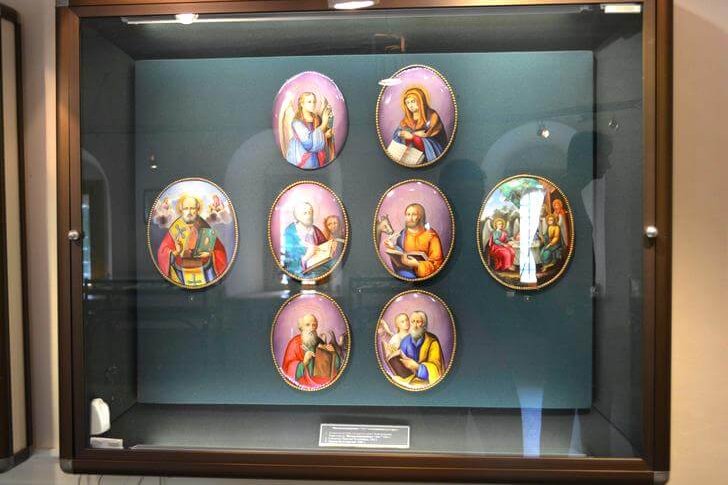
Museum "The Frog Princess"
The museum opened in 2012 at a guest house with the same name, located in a former merchant's mansion of the late 18th century. The collection consists of 2 thousand frog figurines, made in different shapes and styles. For the inhabitants of Rostov, this inhabitant of the swamps has always been a sacred creature (she was revered by representatives of the Finno-Ugric tribe Merya). A visit to the museum is possible only with an excursion group.
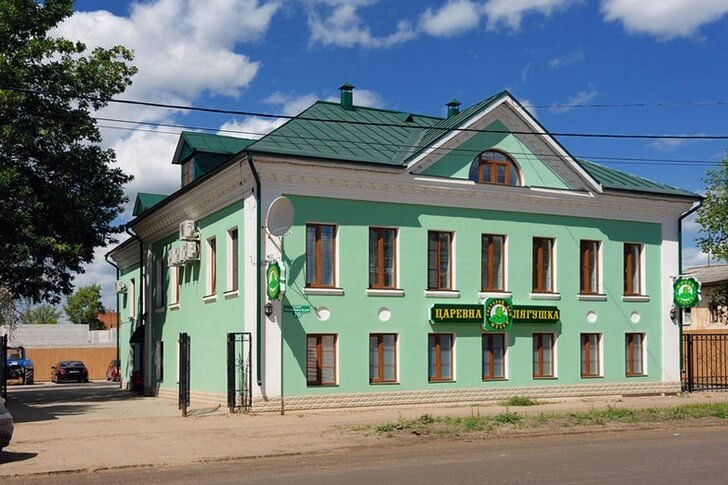
House of Crafts
Museum-workshop, opened in 2007 and dedicated to the traditional crafts of the region. Here you can not only buy interesting crafts made of wood, birch bark, lace, vines, ceramics, but also learn some technique or just look at the fascinating production process. The exposition is located on the territory of a wooden merchant's estate on the shores of Lake Nero. The collection is constantly replenished and updated.
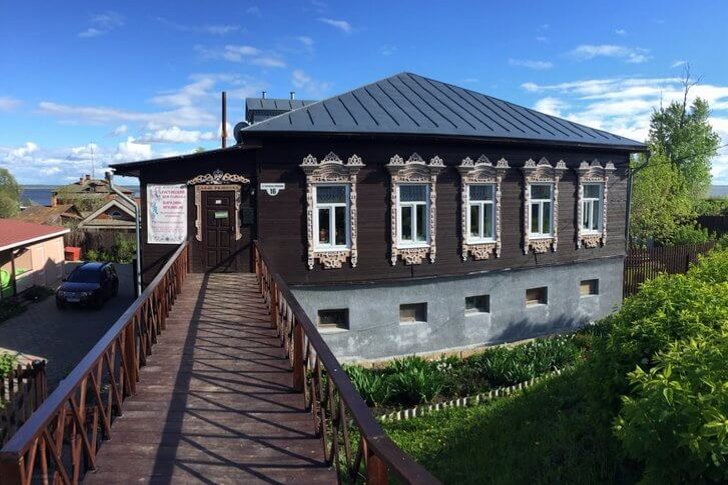
Museum of Rostov Merchants
As expected, the exposition is located in a merchant's mansion, which was built from the 18th to the 20th centuries. From the outside, the building is nothing remarkable: a smooth white facade, square windows and a roof ending in a classic portico. Since 1999, a large-scale restoration has been started here, in 2008 a museum was opened. The exposition is dedicated to the history of the Kekin merchant family.

Art Gallery "Khors"
The gallery presents a variety of collections: enamel panels, household items of the 19th century, paintings by Russian artists. Quite often, temporary exhibitions, master classes and thematic meetings are held here. The exposition is located on the second floor of an old wooden house, decorated with lace platbands, inside which there is a very cozy, almost homely atmosphere.
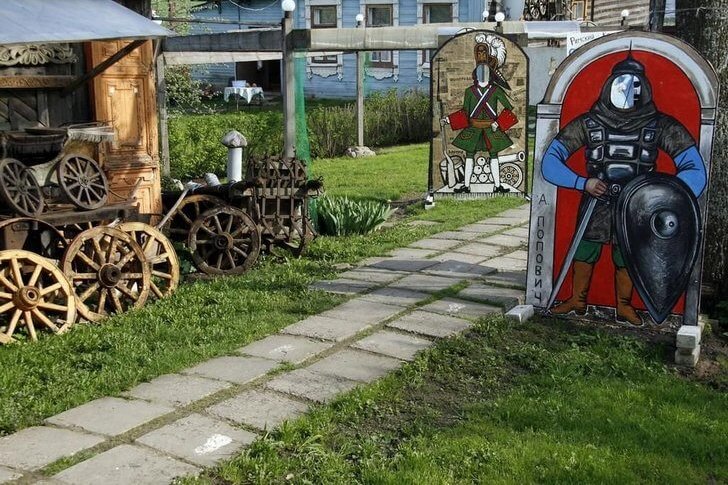
Gymnasium named after A. L. Kekin
A native of Rostov, merchant A. L. Kekin, after his death, bequeathed all the property to the city, since his only son-heir died. According to his will, a gymnasium was built with part of the money (although not immediately, since the authorities at first did not want to fulfill the posthumous wish of the patron). The educational institution was quite democratic for its time: there were no property and religious qualifications for children, which made it possible to study together with representatives of different classes. The institution occupies two buildings - a large one in the classical style and a small one in the Art Nouveau style.

Church of Isidore the Blessed on the ramparts
The temple was built in the 16th century; it is one of the oldest religious buildings in Rostov. The building was built on the site of the grave of Isidor Tverdislov (Blessed) - the holy fool and Orthodox saint. In the 17th-19th centuries, the church underwent reconstruction, as a result of which it acquired a modern look with predominant features of classicism. Services have resumed here since 2002, but the building is in desperate need of repairs.

Church of the Savior at the Market
Previously, the temple was called the Ruzhnaya Church, that is, it existed at the expense of donations from merchants. It is located in a place that was quite busy in previous centuries: there was a brisk trade in Gostiny Dvor. Merchants even used the basement of the building as a warehouse for goods. Money for the construction was collected "by the whole world", so we can say that every Rostov family took part in the construction of the church.

Church of St. John the Evangelist on Ishna
A unique wooden temple of the end of the 17th century, the only one preserved in the Yaroslavl region. It is located 3 km from Rostov in the village of Bogoslov. The building adorns the banks of the Ishna River like a ship moored in the harbor. The church is a branch of the Rostov Kremlin State Museum-Reserve. Many images from the iconostasis, as well as the gilded royal doors, were transferred from here to the museum galleries due to their high cultural value.
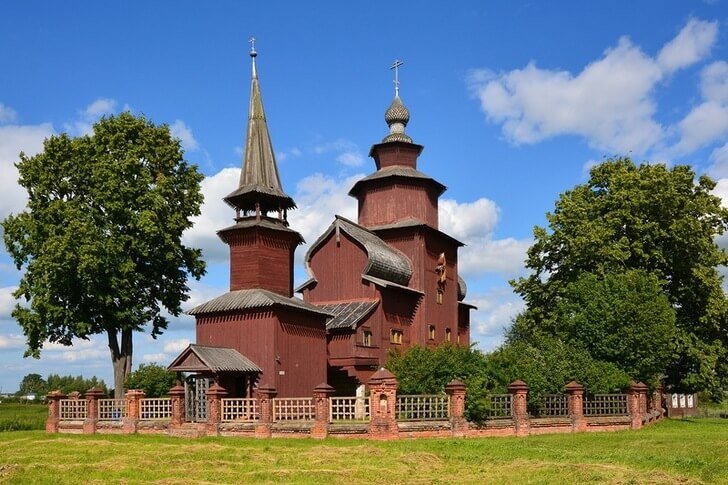
Spaso-Yakovlevsky Monastery
The monastery was founded in the 14th century by Bishop St. Jacob, expelled from Rostov, who built the first church with his own hands. Until the 17th century, all the buildings of the monastery were wooden, and the monks themselves lived quite modestly. After the community came under the care of Metropolitan Dmitry of Rostov, it flourished and became rich. In 1923, the monastery was closed, and for many years it was in disrepair.
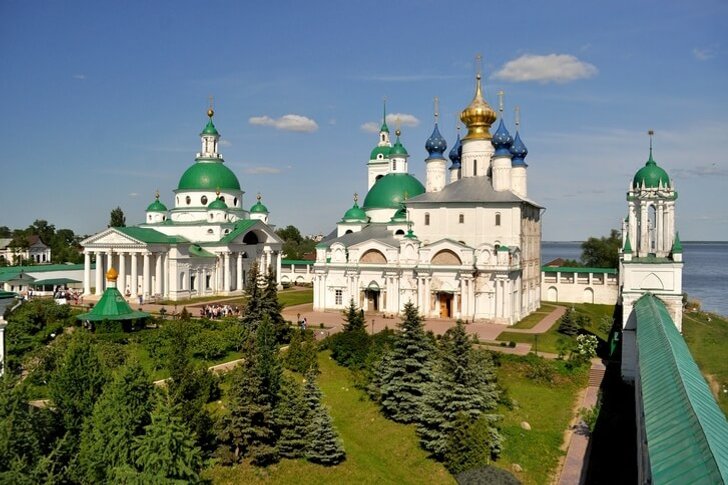
Avraamiev Epiphany Monastery
The oldest male monastery in Rostov, once surrounded by powerful fortress walls. According to legend, the complex was founded in the 13th century on the site of the ancient temple of the pagan god Veles, which was destroyed by the hermit Abraham with the rod of John the Theologian himself. During the Time of Troubles, the monastery was plundered by the Poles, and in the 20th century its buildings were transferred to the museum. Monastic life resumed in the 1990s.

Trinity-Sergius Varnitsky Monastery
A male monastery a few kilometers from Rostov, which is a courtyard of the Holy Trinity Sergius Lavra. The monastery was founded by Archbishop Ephraim in 1427. Many churches were built in the 19th century at the expense of Rostov merchants. In the 20th century, the complex was almost completely destroyed, including the main cathedral, residential and utility buildings. After the revival in the 1990s, the architectural ensemble was rebuilt.
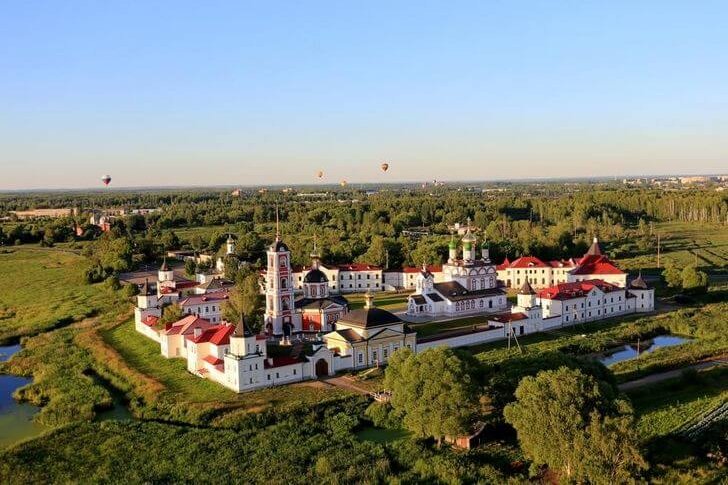
Mother of God-Nativity Monastery
Another monastery with a long history and a difficult fate. This is a valuable monument of medieval stone architecture, which is currently under active restoration. In the Church of the Nativity of the Virgin, frescoes of the 17th century have been preserved, on the territory - the remains of the gate and fence of the 19th century. Next to the complex is the Church of St. Nicholas on the Podozerye, first built in 1745 and extensively restored in 1998.
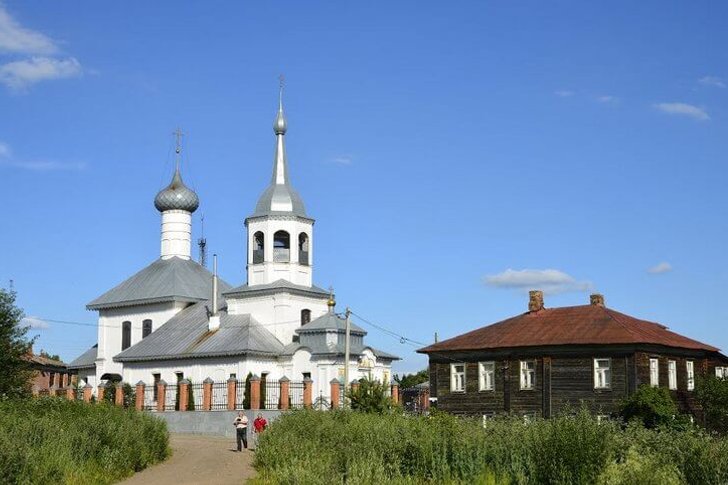
Rostov Boris and Gleb Monastery
The monastery stands right on the road from Rostov to Uglich, along which part of the Golden Ring route is laid. The monastery was founded in the 14th century, but the final architectural ensemble took shape by the 17th century and has not changed since then. From the side, the complex looks powerful and majestic - high walls, impressive towers, monumental domes of temples. It can be seen that everything was built soundly and for centuries.
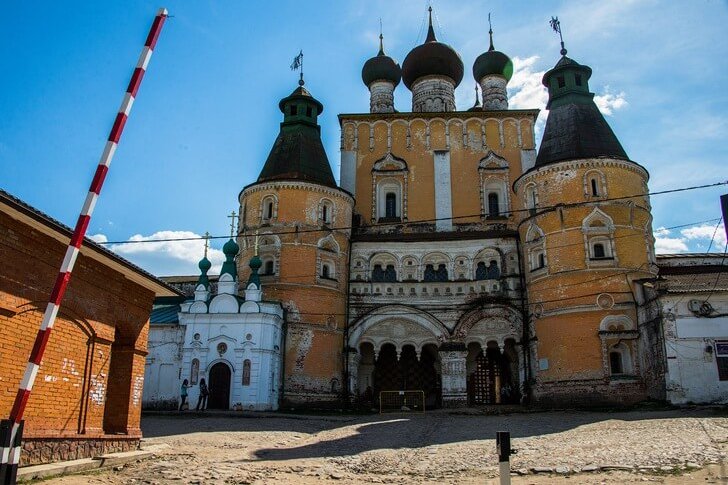
City Park
The park has been operating since 1830. In the 19th century, visitors were entertained by a brass band, a restaurant and carousels worked. After a major renovation in 2012, the park has become a popular recreational area. In warm weather, many inflatable children's attractions are installed here, rentals with bicycles and electric cars are opened, summer cafes offer guests a wide variety of food.

Lake Nero
A shallow lake with low banks 13 km long and 8 km wide. Rostov is located just on its western shore. The first settlements appeared here 6 thousand years ago, in the 7th-9th centuries the Merya tribe lived here, thanks to which the lake got the name “Nero” (which means swampy, muddy). Until 1917, the reservoir was privately owned by various landowners.
